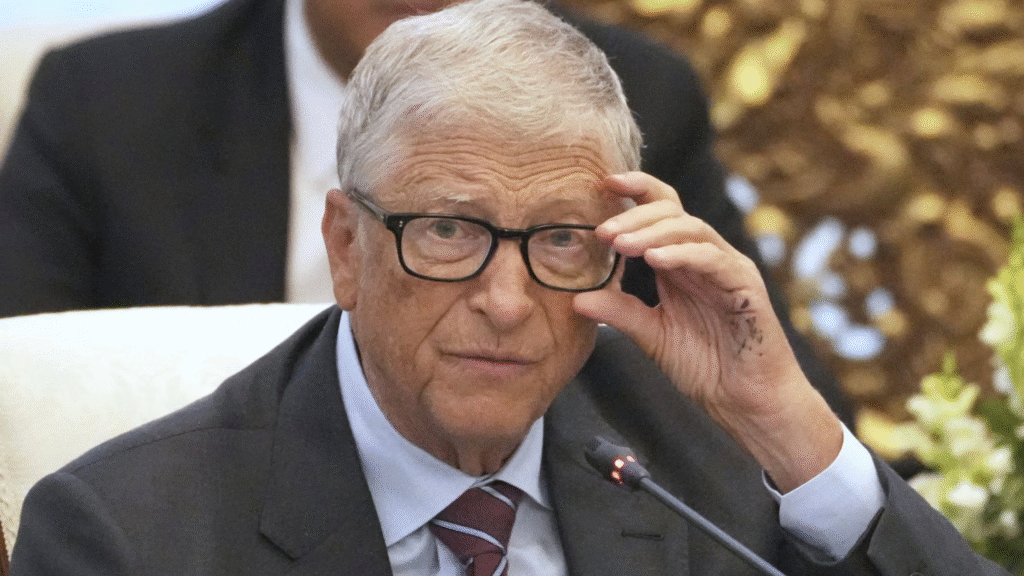
In a move that has captured global attention, Bill Gates, the co-founder of Microsoft and a towering figure in technology and philanthropy, has announced his decision to donate 99% of his fortune to the Bill & Melinda Gates Foundation. This historic commitment, estimated to inject an additional $200 billion into global philanthropic efforts over the next two decades, comes with the ambitious goal of closing the foundation by December 31, 2045. Gates’ monumental pledge sets a precedent in the realm of giving and redefines the concept of legacy in the 21st century.
A Philanthropic Vision Unlike Any Other
Since its inception in 2000, the Bill & Melinda Gates Foundation has been a transformative force in tackling global challenges. From eradicating diseases such as polio and malaria to promoting education reform and addressing climate change, the foundation has invested over $100 billion in initiatives that aim to improve the quality of life for millions worldwide. With Gates’ latest commitment, the foundation’s total contributions are projected to exceed $300 billion by the time it ceases operations.
Bill Gates’ decision to donate nearly all of his wealth aligns with his deeply held belief that the world’s wealthiest individuals have a responsibility to address systemic issues such as poverty, health inequities, and environmental crises. In Gates’ own words, “We have an obligation to focus our resources where they can have the most significant impact.” By choosing to deploy these funds in the present, rather than leaving them as an endowment, Gates seeks to create immediate and measurable change.
This philosophy reflects a departure from traditional approaches to philanthropy, where institutions often prioritize preservation and perpetual funding. Instead, the Gates Foundation aims to accelerate its impact by concentrating its resources over a defined period. This approach ensures that urgent global challenges are addressed with the intensity they demand, maximizing the potential for transformative outcomes.
Strategic Focus Areas
The foundation’s upcoming decades will focus on several critical areas:
- Global Health: Building on its extensive work in combating infectious diseases, the foundation will intensify efforts to eradicate polio, malaria, and tuberculosis. Investments in vaccine research, healthcare infrastructure, and disease surveillance will play a central role.
- Education: Addressing educational inequities, particularly in underserved regions, remains a cornerstone of the foundation’s mission. Initiatives will aim to enhance access to quality education, integrate technology into classrooms, and empower educators.
- Poverty Alleviation: By promoting economic opportunities, improving access to financial services, and supporting sustainable agricultural practices, the foundation seeks to lift millions out of poverty.
- Climate Change: Recognizing the existential threat posed by climate change, the foundation will allocate resources to support renewable energy initiatives, promote sustainable practices, and mitigate the impacts of environmental degradation.
A Catalyst for Philanthropic Change
Gates’ decision to donate the majority of his wealth and set a definitive timeline for the foundation’s closure is expected to influence the broader philanthropic community. As a co-founder of the Giving Pledge, alongside Warren Buffett and Melinda French Gates, Gates has long advocated for billionaires to dedicate a significant portion of their wealth to charitable causes. His latest move amplifies this call to action, challenging other affluent individuals to adopt a similarly proactive approach to philanthropy.
The Giving Pledge, established in 2010, represents a collective commitment by some of the world’s wealthiest individuals to address pressing global issues. With Gates’ renewed focus on philanthropy, the initiative may see increased participation, potentially mobilizing billions of dollars for causes ranging from education to environmental conservation.
The Gates Foundation: A Legacy of Impact
Under Gates’ leadership, the foundation has consistently prioritized transparency, innovation, and collaboration. Partnerships with governments, non-governmental organizations, and local communities have been instrumental in scaling initiatives and ensuring their sustainability. By fostering these relationships, the foundation has created models for effective philanthropic intervention that others can replicate.
The foundation’s achievements are numerous and far-reaching:
- Polio Eradication: Through significant investments in vaccination campaigns and public health infrastructure, the foundation has played a pivotal role in reducing polio cases by over 99% since 1988.
- Vaccine Development: Funding for research and development has led to breakthroughs in vaccines for diseases like malaria and pneumonia, saving millions of lives annually.
- Educational Innovation: Programs such as personalized learning platforms and teacher training initiatives have improved educational outcomes for students worldwide.
Broadening the Scope of Philanthropy
While the foundation has achieved remarkable milestones, it also serves as a catalyst for redefining philanthropy itself. Gates’ approach highlights the need for sustained collaboration between private and public sectors. By pooling resources, expertise, and innovation, philanthropy can address systemic problems that governments or NGOs alone might struggle to resolve.
For example, the Gates Foundation’s work with Gavi, the Vaccine Alliance, has created scalable models for immunization in developing countries. Similarly, its investments in digital financial inclusion have paved the way for millions of unbanked individuals to access essential financial services. These initiatives demonstrate the potential of targeted interventions to produce ripple effects, empowering communities and fostering resilience.

Challenges in the Path Ahead
Managing such a significant philanthropic endeavor comes with its own set of challenges. Deploying $200 billion over two decades requires meticulous planning, monitoring, and evaluation. The foundation must ensure that its funds are utilized efficiently and transparently while navigating the complexities of global development.
Additionally, addressing deeply rooted issues such as poverty and climate change demands long-term commitment and adaptive strategies. Unforeseen challenges—ranging from economic downturns to geopolitical tensions—can impact the effectiveness of planned interventions. The foundation’s ability to remain agile and responsive will be critical to its success.
Building a Sustainable Future
A central theme of the Gates Foundation’s work is sustainability. Beyond immediate interventions, the foundation’s programs are designed to create lasting change. For instance, its support for agricultural innovation aims to increase food security while reducing environmental impact. Similarly, its investments in clean energy seek to address both energy poverty and climate change.
By embedding sustainability into its initiatives, the foundation ensures that its impact extends far beyond its operational lifespan. This forward-looking approach aligns with Gates’ belief in empowering communities to become self-reliant and resilient in the face of challenges.
Inspiring a Global Movement
Bill Gates’ unprecedented pledge serves as a powerful reminder of the transformative potential of philanthropy. By dedicating his fortune to addressing global challenges, Gates exemplifies the values of compassion, responsibility, and vision. His decision not only redefines his personal legacy but also sets a new standard for the world’s wealthiest individuals.
The ripple effects of Gates’ philanthropy extend far beyond the billions of dollars he has committed. By inspiring others to follow suit, Gates is fostering a culture of giving that prioritizes impact over accumulation. As more individuals and organizations embrace this ethos, the collective potential for positive change becomes limitless.
A Call to Action for Billionaires
Gates’ actions place a spotlight on the role of wealth in society. With global inequalities reaching unprecedented levels, his commitment serves as a call to action for billionaires to leverage their resources for the greater good. The Giving Pledge—and Gates’ example—provides a blueprint for how wealth can be utilized to address systemic challenges and uplift marginalized communities.
This call to action extends beyond financial contributions. Gates emphasizes the importance of innovation, collaboration, and advocacy in creating meaningful change. By combining these elements, philanthropists can address complex issues at their roots, fostering sustainable solutions.
The Enduring Legacy of the Gates Foundation
As the Gates Foundation approaches its planned closure in 2045, its impact will be measured not just in dollars spent, but in lives transformed. From eradicating diseases to empowering communities, the foundation’s initiatives have set new benchmarks for what philanthropy can achieve.
Even as the foundation winds down its operations, its legacy will endure through the partnerships, programs, and policies it has supported. By prioritizing transparency and accountability, the foundation has established a standard of excellence that future philanthropists can aspire to.
Conclusion
In an era marked by unprecedented challenges and opportunities, Bill Gates’ decision to donate 99% of his fortune and close the Gates Foundation by 2045 stands as a testament to the power of philanthropy. By focusing resources on urgent global issues, Gates is creating a legacy that transcends wealth, shaping a better future for generations to come. His commitment underscores the profound impact that visionary leadership and selfless action can have on the world.
As the world watches this transformative journey unfold, Gates’ actions serve as both an inspiration and a challenge. They remind us of the incredible potential of human generosity and the enduring difference it can make in the lives of millions

